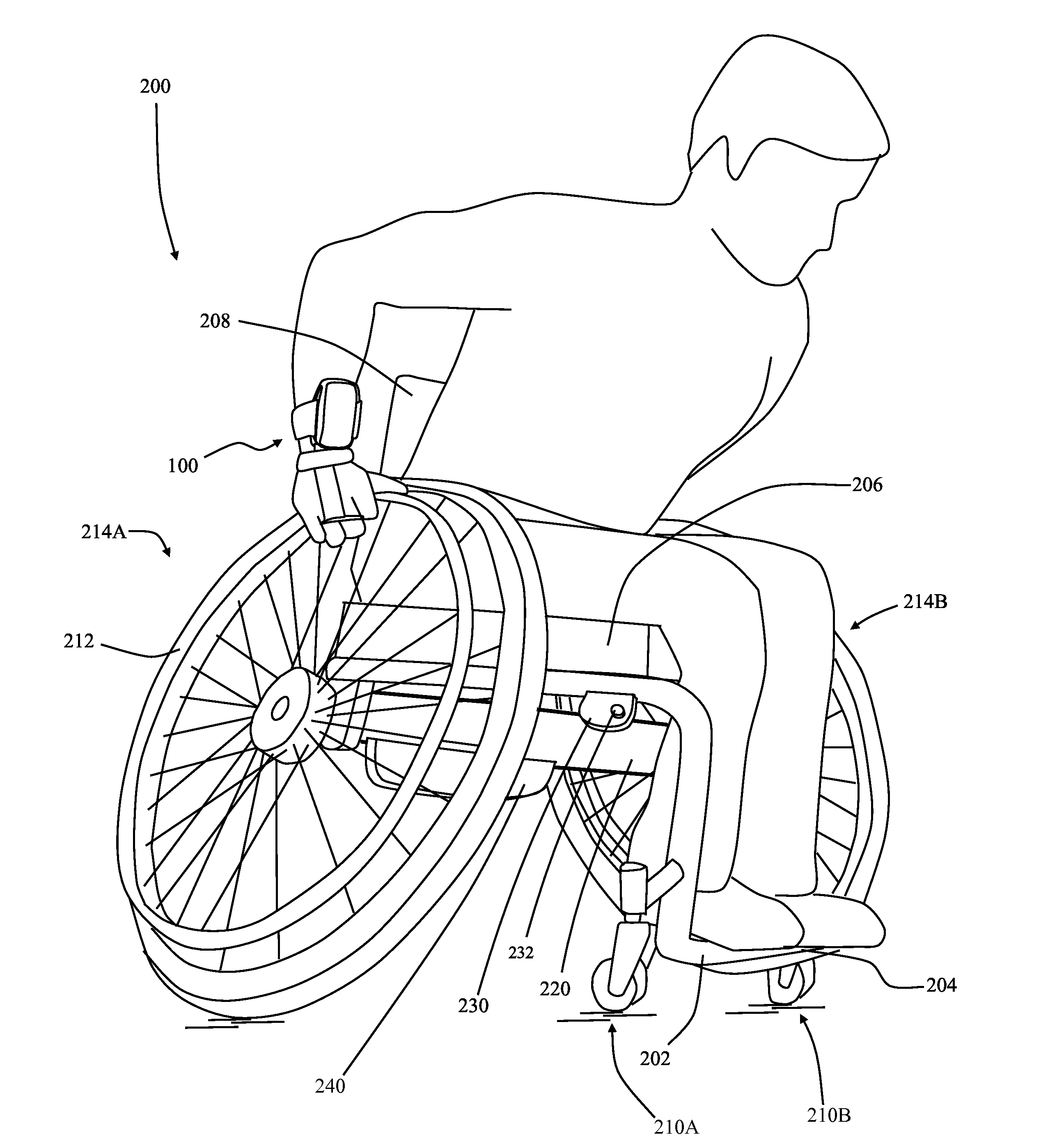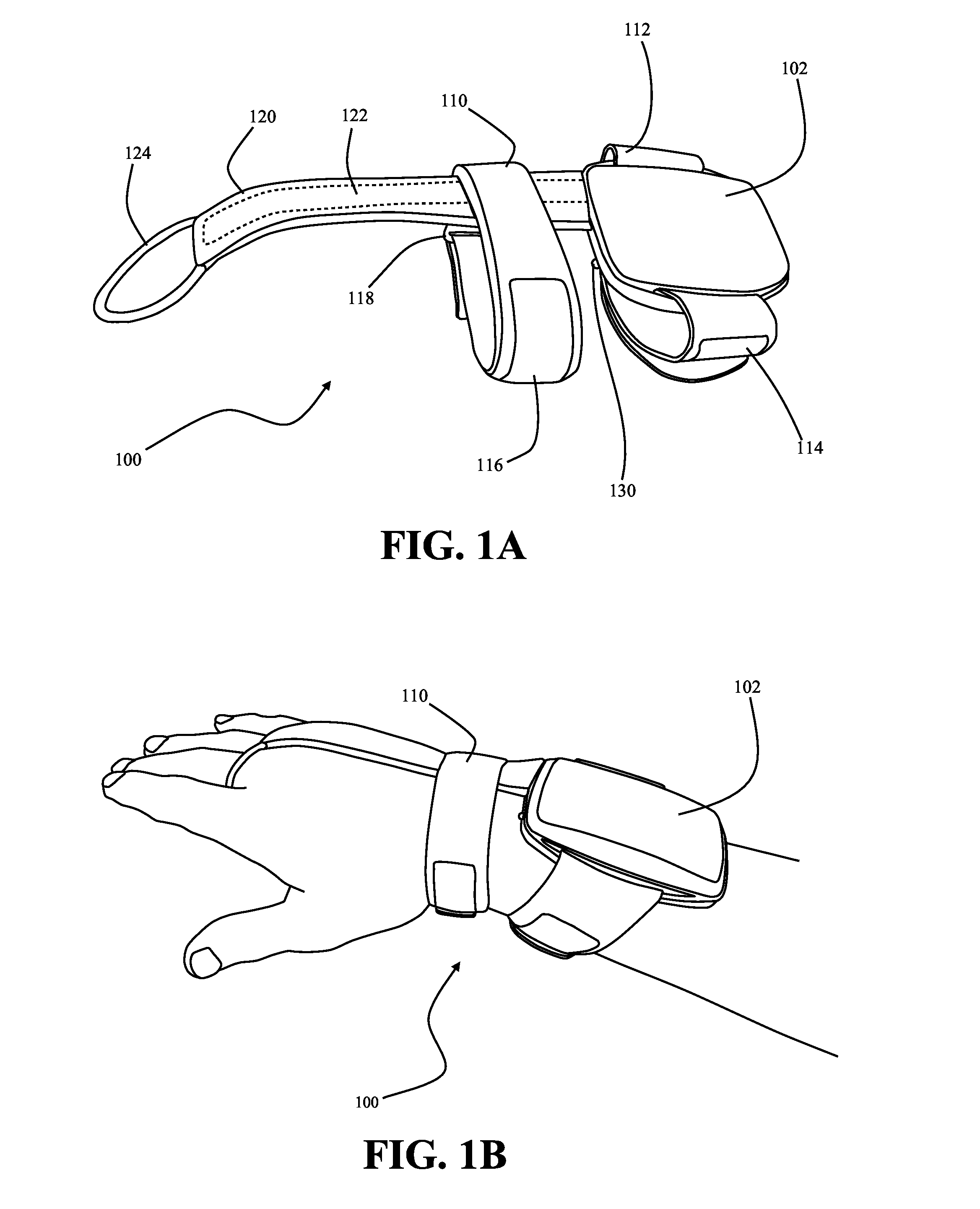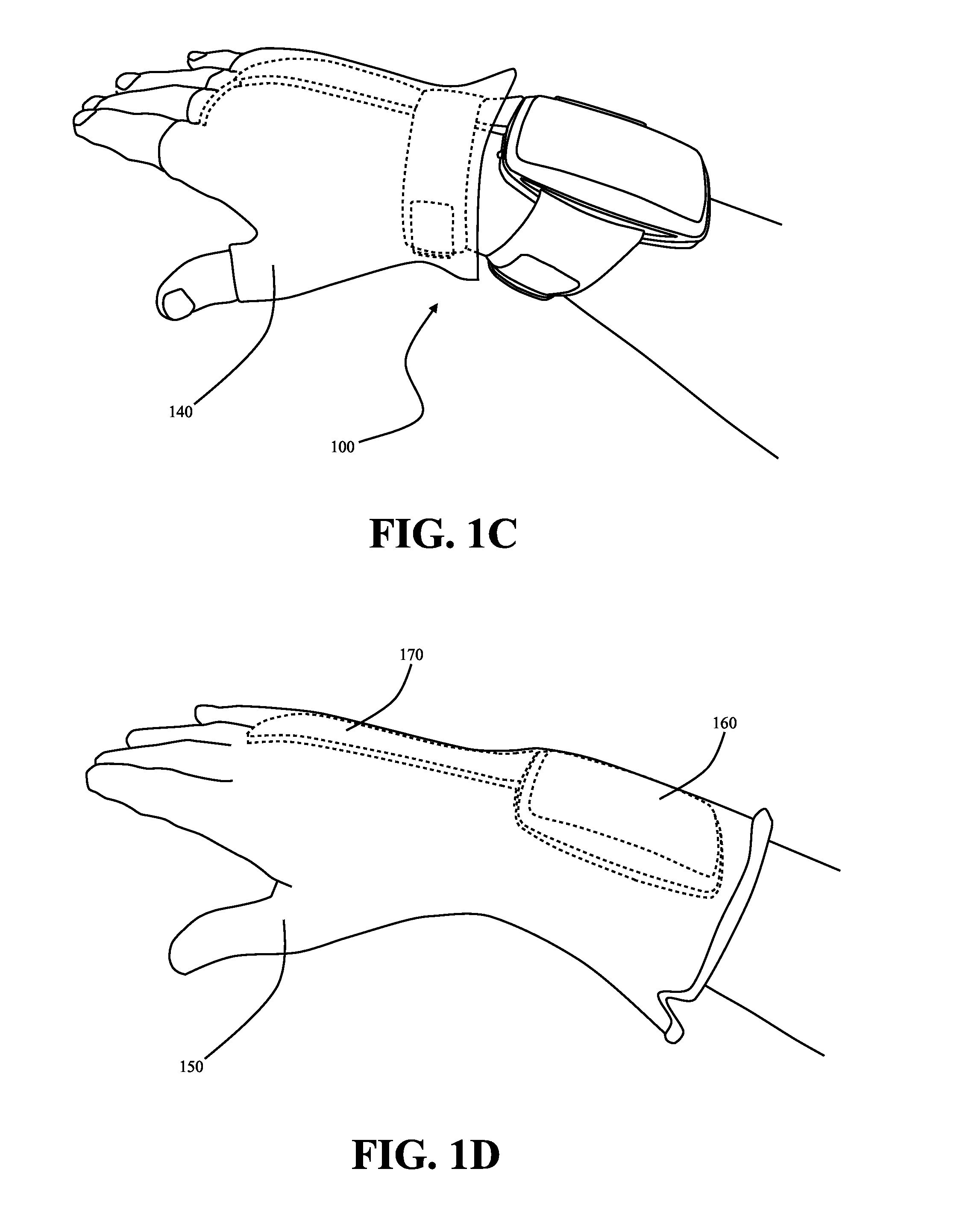Joint movement detection device and system for coordinating motor output with manual wheelchair propulsion
a joint movement detection and manual wheelchair technology, applied in the field of wheelchairs, can solve the problems of unresolved need to effectuate assistive motor control functions, unappreciated rhythmic and kinematic aspects of wheelchair mobility, etc., to prevent accidental motor energization, prevent accidental activation, and increase overall awareness and intentionality
- Summary
- Abstract
- Description
- Claims
- Application Information
AI Technical Summary
Benefits of technology
Problems solved by technology
Method used
Image
Examples
example ii
[0080]A wrist-worn device is comprises structural and electronic elements identical to those described in Example 1, but is instead configured having the flexion-extension sensor flipped over—that is, rotated 180 degrees about its lengthwise axis. Compared against Example 1, the action of the device is thus reversed so that motor energization is activated upon the wrist being extended beyond an activation angle, during the return of the user's hand from a forwardmost position on the pushrim of the wheel to a rearwardmost position. Motor energization is deactivated upon wrist movement, in the opposite direction, beyond a deactivation angle. Similar to the electronic circuitry described in Example 1, an angular separation occurs due to a hysteresis effect created by a switching comparator and a Schmitt trigger, so that a range of separation exists between the activation angle and the deactivation angle, thereby enabling smooth modulation of the user's muscle-generated propulsive effor...
example iii
[0081]Rather than comprising an op-amp integrated circuit, a wrist-worn device comprising structural elements identical to those described in Example 1 utilizes a programmable logic microcontroller for interpreting input received from the flexion-extension sensor. Said input is processed within the wrist-worn device enclosure and is wirelessly communicated to a motor controller mounted beneath the wheelchair seat. In order to more smoothly and appropriately modulate motor energization with muscle-derived propulsive effort, additional control is implemented locally with the motor controller, including interfaces with speed sensors and an incline sensor, an on-board programmable microcontroller, as well as including additional circuitry for smoothly “ramping” motor energization up and down.
[0082]The system is responsive to repetitions of joint movements, in that at least three activation-to-deactivation transitions are required within a 10-second timeframe before initially energizing ...
PUM
 Login to View More
Login to View More Abstract
Description
Claims
Application Information
 Login to View More
Login to View More - R&D
- Intellectual Property
- Life Sciences
- Materials
- Tech Scout
- Unparalleled Data Quality
- Higher Quality Content
- 60% Fewer Hallucinations
Browse by: Latest US Patents, China's latest patents, Technical Efficacy Thesaurus, Application Domain, Technology Topic, Popular Technical Reports.
© 2025 PatSnap. All rights reserved.Legal|Privacy policy|Modern Slavery Act Transparency Statement|Sitemap|About US| Contact US: help@patsnap.com



